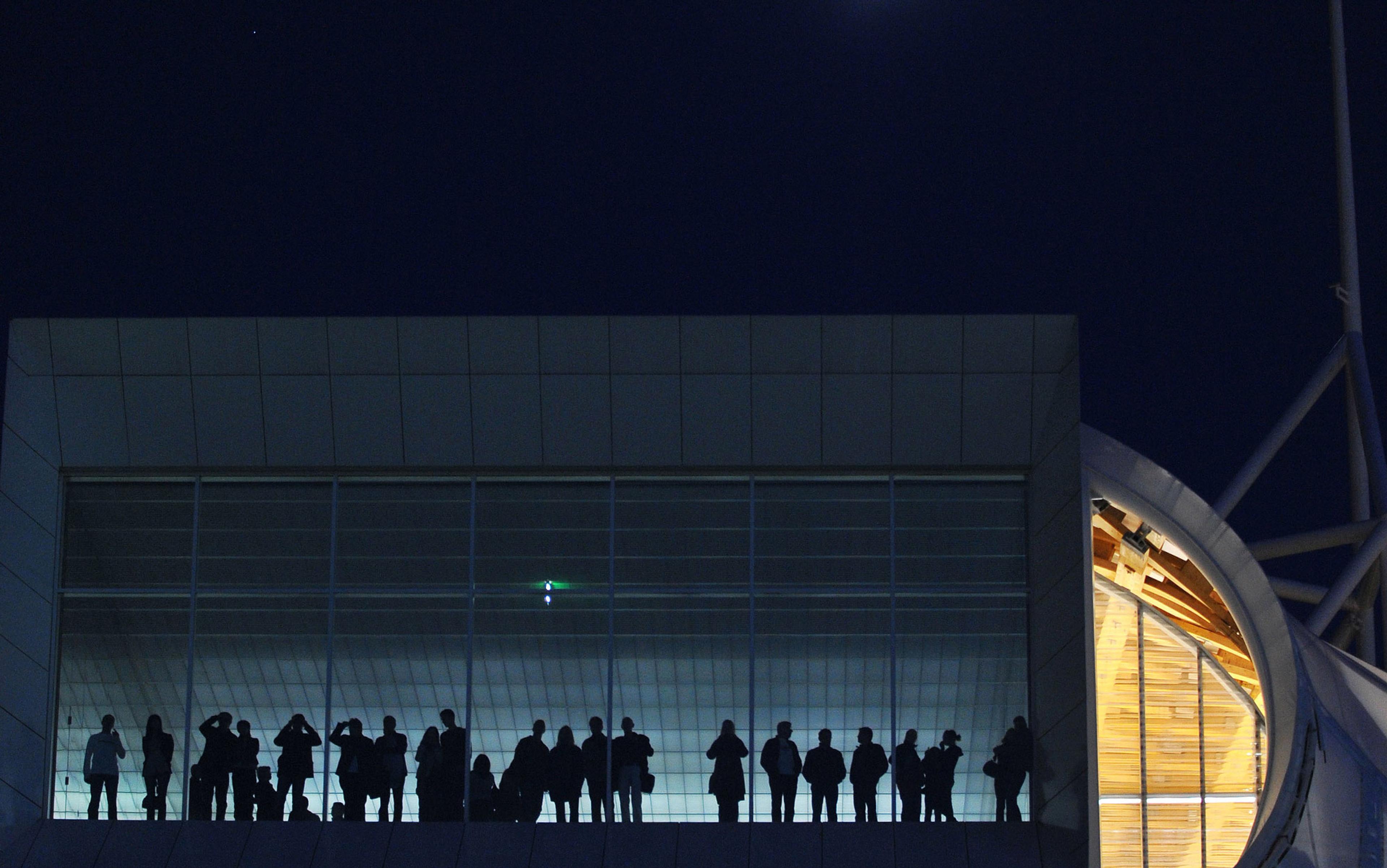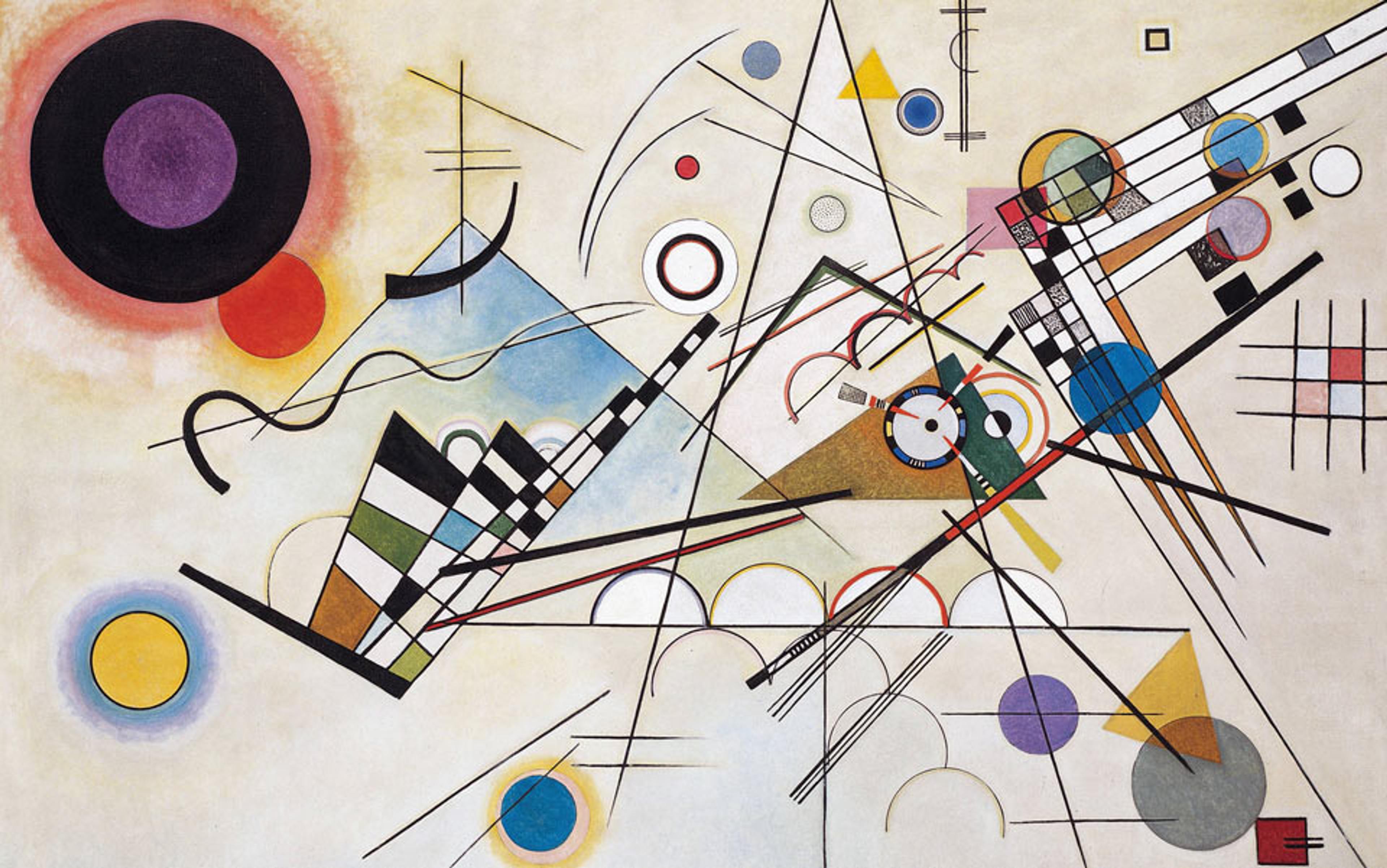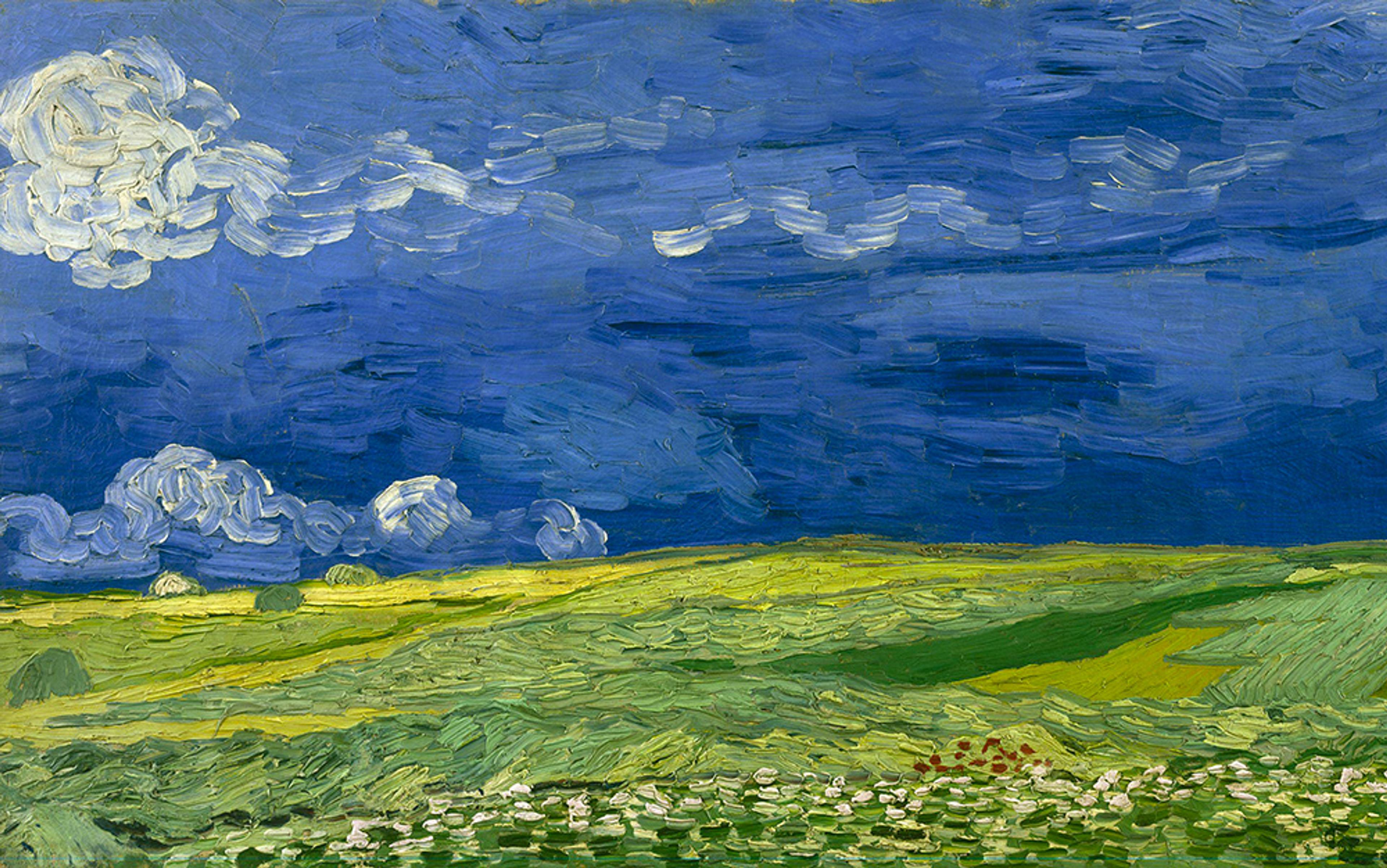The problem of time is one of the greatest puzzles of modern physics. The first bit of the conundrum is cosmological. To understand time, scientists talk about finding a ‘First Cause’ or ‘initial condition’ – a description of the Universe at the very beginning (or at ‘time equals zero’). But to determine a system’s initial condition, we need to know the total system. We need to make measurements of the positions and velocities of its constituent parts, such as particles, atoms, fields and so forth. This problem hits a hard wall when we deal with the origin of the Universe itself, because we have no view from the outside. We can’t step outside the box in order to look within, because the box is all there is. A First Cause is not only unknowable, but also scientifically unintelligible.
The second part of the challenge is philosophical. Scientists have taken physical time to be the only real time – whereas experiential time, the subjective sense of time’s passing, is considered a cognitive fabrication of secondary importance. The young Albert Einstein made this position clear in his debate with philosopher Henri Bergson in the 1920s, when he claimed that the physicist’s time is the only time. With age, Einstein became more circumspect. Up to the time of his death, he remained deeply troubled about how to find a place for the human experience of time in the scientific worldview.
These quandaries rest on the presumption that physical time, with an absolute starting point, is the only real kind of time. But what if the question of the beginning of time is ill-posed? Many of us like to think that science can give us a complete, objective description of cosmic history, distinct from us and our perception of it. But this image of science is deeply flawed. In our urge for knowledge and control, we’ve created a vision of science as a series of discoveries about how reality is in itself, a God’s-eye view of nature.
Such an approach not only distorts the truth, but creates a false sense of distance between ourselves and the world. That divide arises from what we call the Blind Spot, which science itself cannot see. In the Blind Spot sits experience: the sheer presence and immediacy of lived perception.
Behind the Blind Spot sits the belief that physical reality has absolute primacy in human knowledge, a view that can be called scientific materialism. In philosophical terms, it combines scientific objectivism (science tells us about the real, mind-independent world) and physicalism (science tells us that physical reality is all there is). Elementary particles, moments in time, genes, the brain – all these things are assumed to be fundamentally real. By contrast, experience, awareness and consciousness are taken to be secondary. The scientific task becomes about figuring out how to reduce them to something physical, such as the behaviour of neural networks, the architecture of computational systems, or some measure of information.
This framework faces two intractable problems. The first concerns scientific objectivism. We never encounter physical reality outside of our observations of it. Elementary particles, time, genes and the brain are manifest to us only through our measurements, models and manipulations. Their presence is always based on scientific investigations, which occur only in the field of our experience.
This doesn’t mean that scientific knowledge is arbitrary, or a mere projection of our own minds. On the contrary, some models and methods of investigation work much better than others, and we can test this. But these tests never give us nature as it is in itself, outside our ways of seeing and acting on things. Experience is just as fundamental to scientific knowledge as the physical reality it reveals.
The second problem concerns physicalism. According to the most reductive version of physicalism, science tells us that everything, including life, the mind and consciousness, can be reduced to the behaviour of the smallest material constituents. You’re nothing but your neurons, and your neurons are nothing but little bits of matter. Here, life and the mind are gone, and only lifeless matter exists.
To put it bluntly, the claim that there’s nothing but physical reality is either false or empty. If ‘physical reality’ means reality as physics describes it, then the assertion that only physical phenomena exist is false. Why? Because physical science – including biology and computational neuroscience – doesn’t include an account of consciousness. This is not to say that consciousness is something unnatural or supernatural. The point is that physical science doesn’t include an account of experience; but we know that experience exists, so the claim that the only things that exist are what physical science tells us is false. On the other hand, if ‘physical reality’ means reality according to some future and complete physics, then the claim that there is nothing else but physical reality is empty, because we have no idea what such a future physics will look like, especially in relation to consciousness.
Objectivism and physicalism are philosophical ideas, not scientific ones
This problem is known as Hempel’s dilemma, named after the illustrious philosopher of science Carl Gustav Hempel (1905-97). Faced with this quandary, some philosophers argue that we should define ‘physical’ such that it rules out radical emergentism (that life and the mind are emergent from but irreducible to physical reality) and panpsychism (that mind is fundamental and exists everywhere, including at the microphysical level). This move would give physicalism a definite content, but at the cost of trying to legislate in advance what ‘physical’ can mean, instead of leaving its meaning to be determined by physics.
We reject this move. Whatever ‘physical’ means should be determined by physics and not armchair reflection. After all, the meaning of the term ‘physical’ has changed dramatically since the 17th century. Matter was once thought to be inert, impenetrable, rigid, and subject only to deterministic and local interactions. Today, we know that this is wrong in virtually all respects: we accept that there are several fundamental forces, particles that have no mass, quantum indeterminacy, and nonlocal relations. We should expect further dramatic changes in our concept of physical reality in the future. For these reasons, we can’t simply legislate what the term ‘physical’ can mean as a way to get out of Hempel’s dilemma.
Objectivism and physicalism are philosophical ideas, not scientific ones – even if some scientists espouse them. They don’t logically follow from what science tells us about the physical world, or from the scientific method itself. By forgetting that these perspectives are a philosophical bias, not a mere data-point, scientific materialists ignore the ways that immediate experience and the world can never be separated.
We’re not alone in our opinions. Our account of the Blind Spot is based on the work of two major philosophers and mathematicians, Edmund Husserl and Alfred North Whitehead. Husserl, the German thinker who founded the philosophical movement of phenomenology, argued that lived experience is the source of science. It’s absurd, in principle, to think that science can step outside it. The ‘life-world’ of human experience is the ‘grounding soil’ of science, and the existential and spiritual crisis of modern scientific culture – what we are calling the Blind Spot – comes from forgetting its primacy.
Whitehead, who taught at Harvard University from the 1920s, argued that science relies on a faith in the order of nature that can’t be justified by logic. That faith rests directly on our immediate experience. Whitehead’s so-called process philosophy is based on a rejection of the ‘bifurcation of nature’, which divides immediate experience into the dichotomies of mind versus body, and perception versus reality. Instead, he argued that what we call ‘reality’ is made up of evolving processes that are equally physical and experiential.
Nowhere is the materialistic bias in science more apparent than quantum physics, the science of atoms and subatomic particles. Atoms, conceived as the building blocks of matter, have been with us since the Greeks. The discoveries of the past 100 years would seem to be a vindication for all those who have argued for an atomist, and reductionist, conception of nature. But what the Greeks, Isaac Newton and 19th-century scientists meant by the thing called an ‘atom’, and what we mean today, are very different. In fact, it’s the very notion of a ‘thing’ that quantum mechanics calls into question.
The classic model for bits of matter involves little billiard balls, clumping together and jostling around in various forms and states. In quantum mechanics, however, matter has the characteristics of both particles and waves. There are also limits to the precision with which measurements can be made, and measurements seem to disturb the reality that experimenters are trying to size up.
Today, interpretations of quantum mechanics disagree about what matter is, and what our role is with respect to it. These differences concern the so-called ‘measurement problem’: how the wave function of the electron reduces from a superposition of several states to a single state upon observation. For several schools of thought, quantum physics doesn’t give us access to the way the world fundamentally is in itself. Rather, it only lets us grasp how matter behaves in relation to our interactions with it.
We erect a false idol of science as something that bestows absolute knowledge
According to the so-called Copenhagen interpretation of Niels Bohr, for example, the wave function has no reality outside of the interaction between the electron and the measurement device. Other approaches, such as the ‘many worlds’ and ‘hidden variables’ interpretations, seek to preserve an observer-independent status for the wave function. But this comes at the cost of adding features such as unobservable parallel universes. A relatively new interpretation known as Quantum-Bayesianism (QBism) – which combines quantum information theory and Bayesian probability theory – takes a different tack; it interprets the irreducible probabilities of a quantum state not as an element of reality, but as the degrees of belief an agent has about the outcome of a measurement. In other words, making a measurement is like making a bet on the world’s behaviour, and once the measurement is made, updating one’s knowledge. Advocates of this interpretation sometimes describe it as ‘participatory realism’, because human agency is woven into the process of doing physics as a means of gaining knowledge about the world. From this viewpoint, the equations of quantum physics don’t refer just to the observed atom but also to the observer and the atom taken as a whole in a kind of ‘observer-participancy’.
Participatory realism is controversial. But it’s precisely this plurality of interpretations, with a variety of philosophical implications, that undermines the sober certainty of the materialist and reductionist position on nature. In short, there’s still no simple way to remove our experience as scientists from the characterisation of the physical world.
This brings us back to the Blind Spot. When we look at the objects of scientific knowledge, we don’t tend to see the experiences that underpin them. We do not see how experience makes their presence to us possible. Because we lose sight of the necessity of experience, we erect a false idol of science as something that bestows absolute knowledge of reality, independent of how it shows up and how we interact with it.
The Blind Spot also reveals itself in the study of consciousness. Most scientific and philosophical discussions of consciousness focus on ‘qualia’ – the qualitative aspects of our experience, such as the perceived red glow of a sunset, or the sour taste of a lemon. Neuroscientists have established close correlations between such qualities and certain brain states, and they’ve been able to manipulate how we experience these qualities by acting directly on the brain. Nevertheless, there’s still no scientific explanation of qualia in terms of brain activity – or any other physical process for that matter. Nor is there any real understanding of what such an account would look like.
The mystery of consciousness includes more than just qualia. There’s also the question of subjectivity. Experiences have a subjective character; they occur in the first person. Why should a given sort of physical system have the feeling of being a subject? Science has no answer to this question.
At a deeper level, we might ask how experience comes to have a subject-object structure in the first place. Scientists and philosophers often work with the image of an ‘inside’ mind or subject grasping an outside world or object. But philosophers from different cultural traditions have challenged this image. For example, the philosopher William James (whose notion of ‘pure experience’ influenced Husserl and Whitehead) wrote in 1905 about the ‘active sense of living which we all enjoy, before reflection shatters our instinctive world for us’. That active sense of living doesn’t have an inside-outside/subject-object structure; it’s subsequent reflection that imposes this structure on experience.
More than a millennium ago, Vasubandhu, an Indian Buddhist philosopher of the 4th to 5th century CE, criticised the reification of phenomena into independent subjects versus independent objects. For Vasubandhu, the subject-object structure is a deep-seated, cognitive distortion of a causal network of phenomenal moments that are empty of an inner subject grasping an outer object.
To bring the point home, consider that in certain intense states of absorption – during meditation, dance or highly skilled performances – the subject-object structure can drop away, and we are left with a sense of sheer felt presence. How is such phenomenal presence possible in a physical world? Science is silent on this question. And yet, without such phenomenal presence, science is impossible, for presence is a precondition for any observation or measurement to be possible.
Scientific materialists will argue that the scientific method enables us to get outside of experience and grasp the world as it is in itself. As will be clear by now, we disagree; indeed, we believe that this way of thinking misrepresents the very method and practice of science.
In general terms, here’s how the scientific method works. First, we set aside aspects of human experience on which we can’t always agree, such as how things look or taste or feel. Second, using mathematics and logic, we construct abstract, formal models that we treat as stable objects of public consensus. Third, we intervene in the course of events by isolating and controlling things that we can perceive and manipulate. Fourth, we use these abstract models and concrete interventions to calculate future events. Fifth, we check these predicted events against our perceptions. An essential ingredient of this whole process is technology: machines – our equipment – that standardise these procedures, amplify our powers of perception, and allow us to control phenomena to our own ends.
The Blind Spot arises when we start to believe that this method gives us access to unvarnished reality. But experience is present at every step. Scientific models must be pulled out from observations, often mediated by our complex scientific equipment. They are idealisations, not actual things in the world. Galileo’s model of a frictionless plane, for example; the Bohr model of the atom with a small, dense nucleus with electrons circling around it in quantised orbits like planets around a sun; evolutionary models of isolated populations – all of these exist in the scientist’s mind, not in nature. They are abstract mental representations, not mind-independent entities. Their power comes from the fact that they’re useful for helping to make testable predictions. But these, too, never take us outside experience, for they require specific kinds of perceptions performed by highly trained observers.
For these reasons, scientific ‘objectivity’ can’t stand outside experience; in this context, ‘objective’ simply means something that’s true to the observations agreed upon by a community of investigators using certain tools. Science is essentially a highly refined form of human experience, based on our capacities to observe, act and communicate.
The contention that science reveals a perfectly objective ‘reality’ is more theological than scientific
So the belief that scientific models correspond to how things truly are doesn’t follow from the scientific method. Instead, it comes from an ancient impulse – one often found in monotheistic religions – to know the world as it is in itself, as God does. The contention that science reveals a perfectly objective ‘reality’ is more theological than scientific.
Recent philosophers of science who target such ‘naive realism’ argue that science doesn’t culminate in a single picture of a theory-independent world. Rather, various aspects of the world – from chemical interactions to the growth and development of organisms, brain dynamics and social interactions – can be more or less successfully described by partial models. These models are always bound to our observations and actions, and circumscribed in their application.
The fields of complex systems theory and network science add mathematical precision to these claims by focusing on wholes rather than the reduction to parts. Complex systems theory is the study of systems, such as the brain, living organisms or the Earth’s global climate, whose behaviour is difficult to model: how the system responds depends on its state and context. Such systems exhibit self-organisation, spontaneous pattern-formation and sensitive dependence on initial conditions (very small changes to the initial conditions can lead to widely different outcomes).
Network science analyses complex systems by modelling their elements as nodes, and the connections between them as links. It explains behaviour in terms of network topologies – the arrangements of nodes and connections – and global dynamics, rather than in terms of local interactions at the micro level.
Inspired by these perspectives, we propose an alternative vision that seeks to move beyond the Blind Spot. Our experience and what we call ‘reality’ are inextricable. Scientific knowledge is a self-correcting narrative made from the world and our experience of it evolving together. Science and its most challenging problems can be reframed once we appreciate this entanglement.
Let’s return to the problem we started with, the question of time and the existence of a First Cause. Many religions have addressed the notion of a First Cause in their mythic creation narratives. To explain where everything comes from and how it originates, they assume the existence of an absolute power or deity that transcends the confines of space and time. With few exceptions, God or gods create from without to give rise to what is within.
Unlike myth, however, science is constrained by its conceptual framework to function along a causal chain of events. The First Cause is a clear rupture of such causation – as Buddhist philosophers pointed out long ago in their arguments against the Hindu theistic position that there must be a first divine cause. How could there be a cause that was not itself an effect of some other cause? The idea of a First Cause, like the idea of a perfectly objective reality, is fundamentally theological.
The time of the physicist depends for its meaning on our lived experience of time
These examples suggest that ‘time’ will always have a human dimension. The best we can aim for is to construct a scientific cosmological account that is consistent with what we can measure and know of the Universe from inside. The account can’t ever be a final or complete description of cosmic history. Rather, it must be an ongoing, self-correcting narrative. ‘Time’ is the backbone of this narrative; our lived experience of time is necessary to make the narrative meaningful. With this insight, it seems it’s the physicist’s time that is secondary; it’s merely a tool to describe the changes we’re able to observe and measure in the natural world. The time of the physicist, then, depends for its meaning on our lived experience of time.
We can now appreciate the deeper significance of our three scientific conundrums – the nature of matter, consciousness and time. They all point back to the Blind Spot and the need to reframe how we think about science. When we try to understand reality by focusing only on physical things outside of us, we lose sight of the experiences they point back to. The deepest puzzles can’t be solved in purely physical terms, because they all involve the unavoidable presence of experience in the equation. There’s no way to render ‘reality’ apart from experience, because the two are always intertwined.
To finally ‘see’ the Blind Spot is to wake up from a delusion of absolute knowledge. It’s also to embrace the hope that we can create a new scientific culture, in which we see ourselves both as an expression of nature and as a source of nature’s self-understanding. We need nothing less than a science nourished by this sensibility for humanity to flourish in the new millennium.






